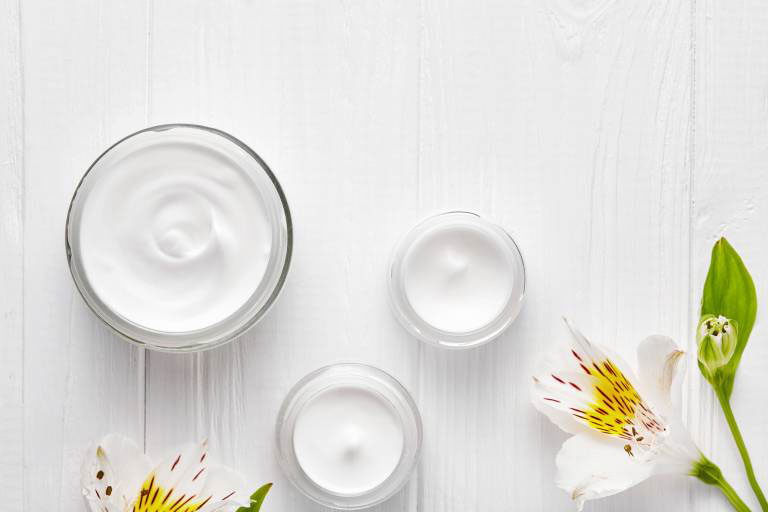Ceramides are the star skincare ingredient. It has stayed that way for the past few years. That is why Ceramides can be often found in the Dr.Althea skin care products. Specifically Ceramide-3 or Ceramide NP – a ceramide that moisturizes the skin.
But, what are Ceramides anyways?
Ceramides (latin: Cerebrum, “brain”) is a type of lipid (fat). They are the main structural element of the hydrolipidic layer of the skin, necessary to protect against aggressive external factors and prevent moisture loss.
Ceramides are lipids that our skin naturally produces. We can find Ceramides in 50% of our skin structure meaning there’s never too many Ceramides in skincare.

Why are there different Ceramides?
9 different ceramides are synthesized in the skin; only some of their analogues are used in beauty products.
For cosmetic needs, ceramides of natural and synthetic origin are used. There is a popular belief that synthetic, the so-called pseudoceramides, are much inferior in quality and action to their natural prototype. However, there is no scientific evidence to support or deny this claim.

Benefits for skin
One of the main functions of ceramides is construction, they fill the intercellular space. With a lack or poor quality of ceramides, the integrity of the natural skin shield will be impaired. It is not difficult to predict the sad consequences.
- Dehydration – without coating, moisture will begin to evaporate.
- Dryness – when cells cannot retain moisture, the skin begins to feel thirsty and an unpleasant feeling of tightness.
- Irritation and inflammation – ceramides protect the skin from harmful toxins, heavy metals, exhaust gases, viruses and bacteria.
Ceramides are a multi-talented team player. There are anti-aging properties, moisturizing properties, and protective properties.

Ceramides work best with antioxidants and skin-restoring ingredients! We weren’t kidding when we said it was multi-talented. That’s why we paired Ceramide 3 with Niacinamide in the Resveratrol 345NA Intensive Repair Cream, and peptides in the Azulene 147HA Intensive Soothing Cream and Balm Foundation.
Ceramides are especially great for our skin as we age. Our skin starts to lose Ceramides which weakens our skin, ages it and leaves it feeling dry.
Ceramides and lipid balance
The lipid balance in the skin can be impaired due to external and internal circumstances.
Age
Over time, the epidermis loses its ability to synthesize ceramides, which leads to dry skin – one of the main problems of mature skin.
Improper care
Too aggressive, improperly selected cleansers destroy the lipid layer. The result is dehydration.
Extreme weather conditions
Frost and sun, cold wind, excessively cold or over-dried air can breach the skin’s protective system and cause dryness, itching and redness.
Lack of fatty acids in the diet
Yes, the skin does not like when we eat wrong, and does not hide it. Dryness and sensitivity – this is the result of a excessive diet and lack of good fats in the diet.

Recommendations for use
Skin care products with ceramides are usually suitable for any type of skin. But there are cases when creams with ceramides are vital.
Sensitive skin
It is distinguished by a weakened lipid barrier, and cosmetics with ceramides can improve its condition, protect and prevent a reaction to negative external factors.
Dry skin
Dry skin main problem is a permanent shortage of lipids, and ceramides in particular. The creams containing ceramides are able to seal moisture and hold it in the skin.
Aging skin
Aging ski suffers from a lack of fat for obvious reasons, which include, for example, a decrease in the synthesis of own lipids.
After treatment skin
Creams with ceramides are recommended after salon exfoliation and dermabrasion procedures. The skin after these manipulations requires faster restoration of the lipid mantle.
Problem skin
Despite the high oiliness of this type of skin, ceramides can also be useful to establish the process of normal exfoliation of cells and to avoid the effect of over-dried skin as a result of treatment.
